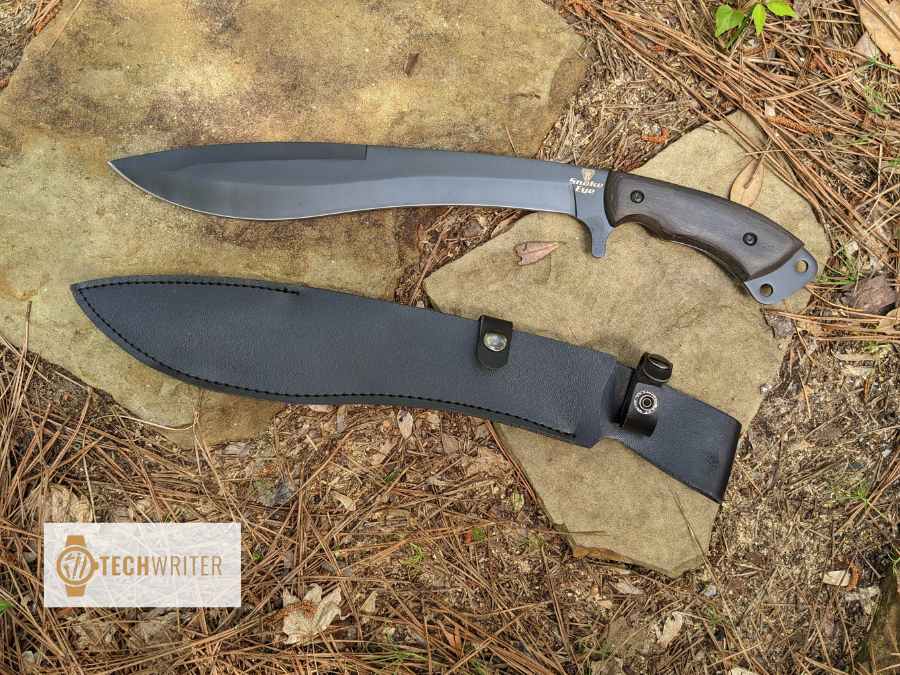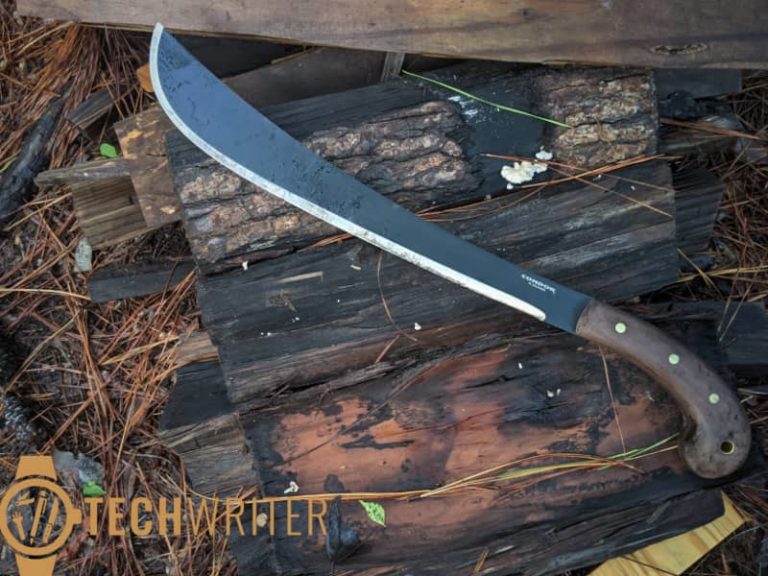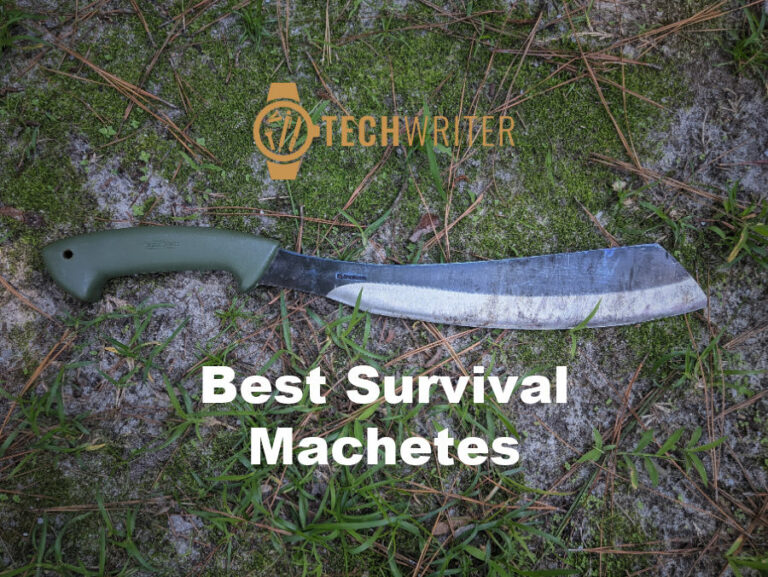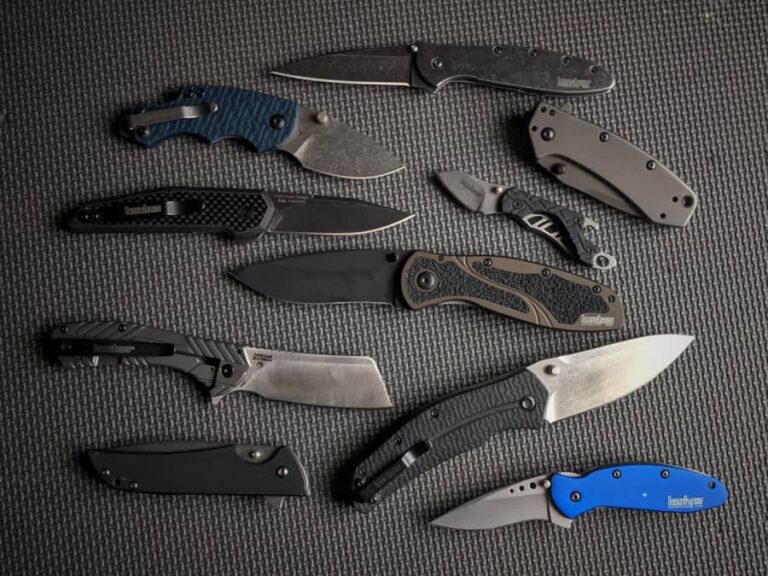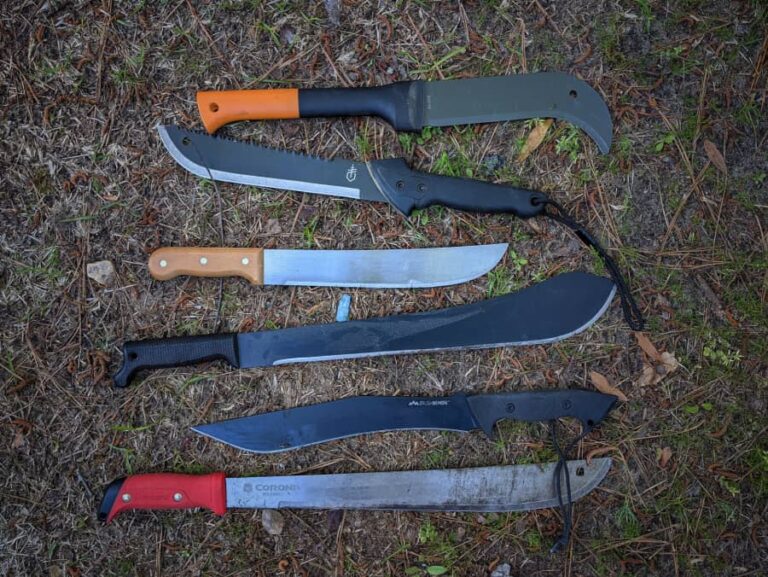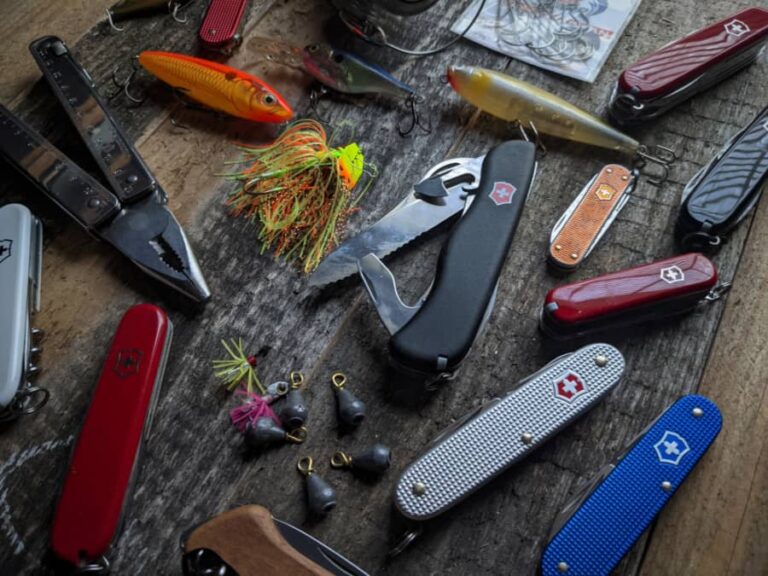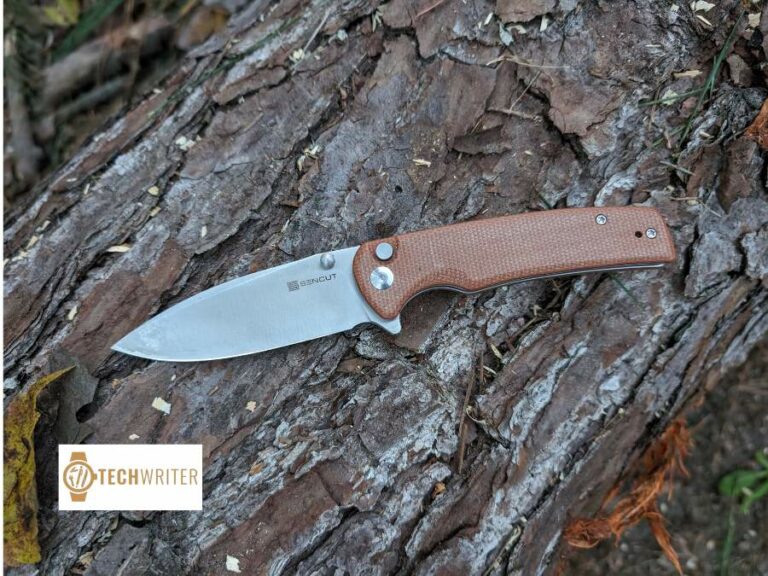Snake Eye Machete Review
Well folks, you can’t win them all.
I’ve been working my way through testing a slew of budget-friendly machetes of late, and I’ve discovered some real diamonds in the rough. This machete from Snake Eye Tactical… not so much.
What’s frustrating is that this one isn’t a total loss. The Snake Eye Machete has enough positive attributes that I can’t write it off completely, but its flaws are so obvious that I also can’t help but be disappointed by it.
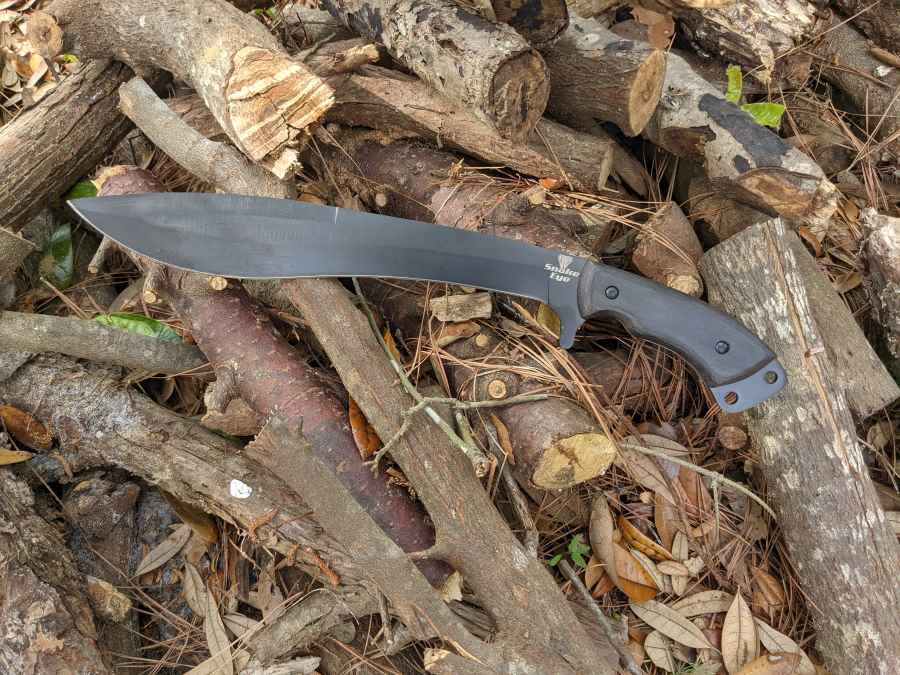
Snake Eye Machete: First Impressions
I really like the look of this Snake Eye Machete. It has a somewhat kukri-like curvature to the blade, but is also a bit thinner and lither than a true kukri, so I was excited to try it out. The shape reminds me quite a bit of the Schrade Priscilla Brush Sword, albeit a scaled-down version.
It’s a handsome machete, and it’s sharp right out of the box too, which is something I always appreciate. It’s not exactly shaving sharp, but honestly sharper than most machetes when I first get them. It came with a little “made in China” sticker on the blade that was impossible to get off without leaving sticky residue, which in retrospect, should have been the first red flag.
There’s also something about it that just doesn’t feel right in my hands, and it’s hard to explain exactly why. If you’ve ever held a blade that just feels “off,” then I think you know that unsettling feeling.
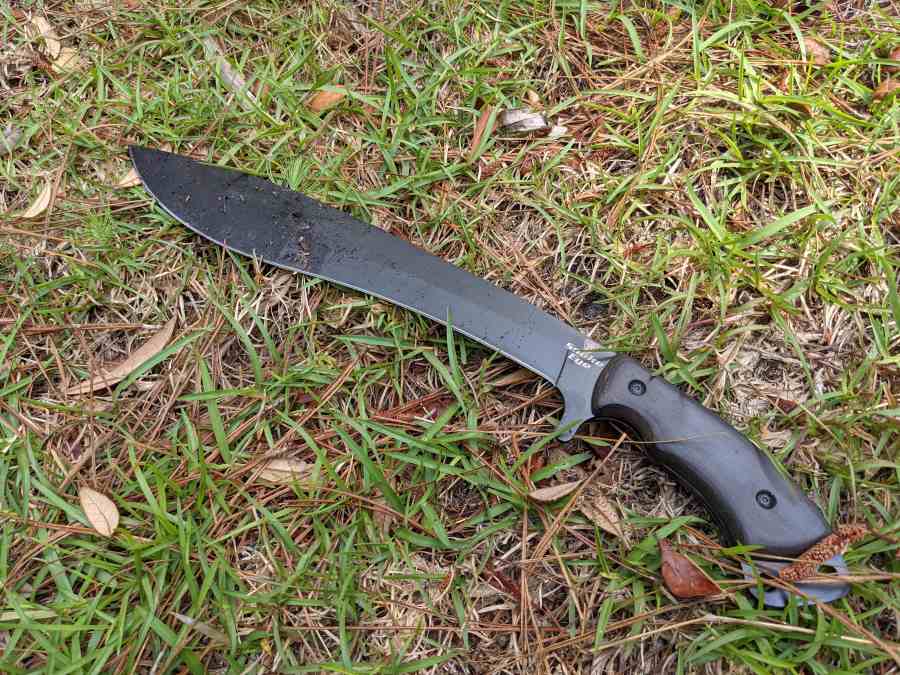
Measurements & Specs
The Snake Eye Machete measures 18 inches in total length, which includes a 13-inch blade. The blade is just a hair over 1/8-inch thick at the widest part of the spine, and quite a bit thinner towards the tip. It’s a full tang and weighs 16 ounces.
The steel used to make the blade is 440 stainless, and it has a black matte anti-rust protective coating. It’s advertised as having a natural wood handle, but I’m pretty sure the “wood” is actually some sort of composite. It also supposedly comes in a natural leather sheath, but I’m 100% certain that it’s some combination of plastic and fake “pleather.”
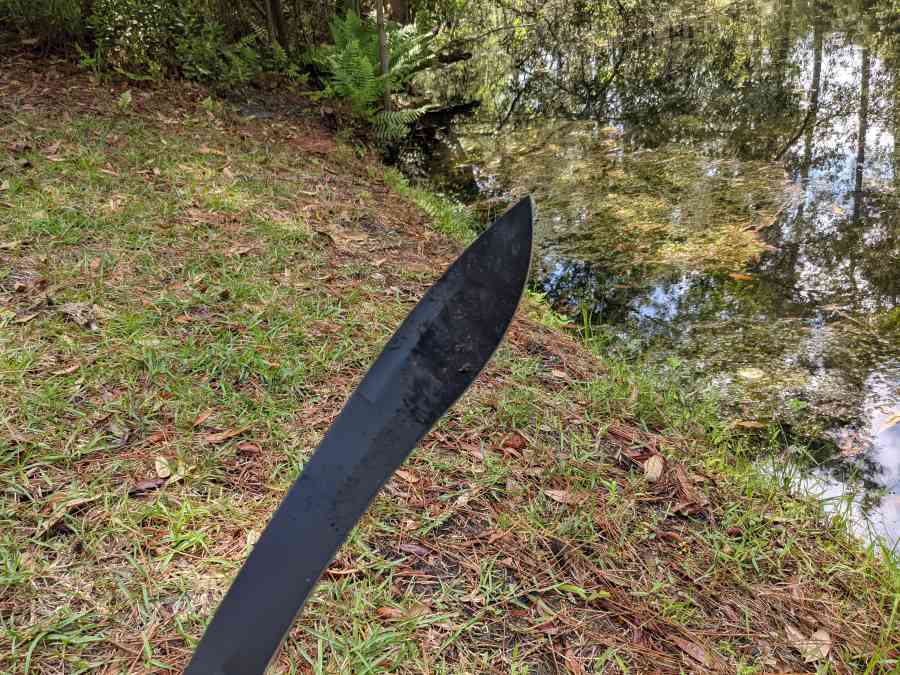
Blade Shape & Steel
The cutting edge of the Snake Eye Machete has a recurve shape typical of kukri-inspired machetes. The spine of the blade curves downward toward both the tip of the blade and the butt end of the handle—only a short section of the spine near the middle is truly straight—giving it a drop-point appearance.
This machete has a saber grind, which is generally good for strength and chopping power. In this specific case, that’s likely a good call, as the blade is not as broad as a typical kukri, especially at the back end near the handle. The Snake Eye also seems to be contoured along the front top of the blade in a way that resembles a false edge grind.
The blade is also not quite as deeply recurved as most kukri-type blades. As a result, I find that the forward portion of the blade doesn’t bite as deeply as other similar blades when used as a chopper or for batoning. Likewise, the recurve section isn’t quite as effective for whittling and feather sticking as it could be if the curve was a little more pronounced.
The 440 stainless steel used to make the blade is decent stuff, but nothing special. It has good hardness, corrosion resistance and tensile strength. Normally I would expect to see a more specific steel grade (440A, 440B, 440C, etc.), and the fact that this steel is referred to simply as “440” suggests to me that the exact composition may vary.
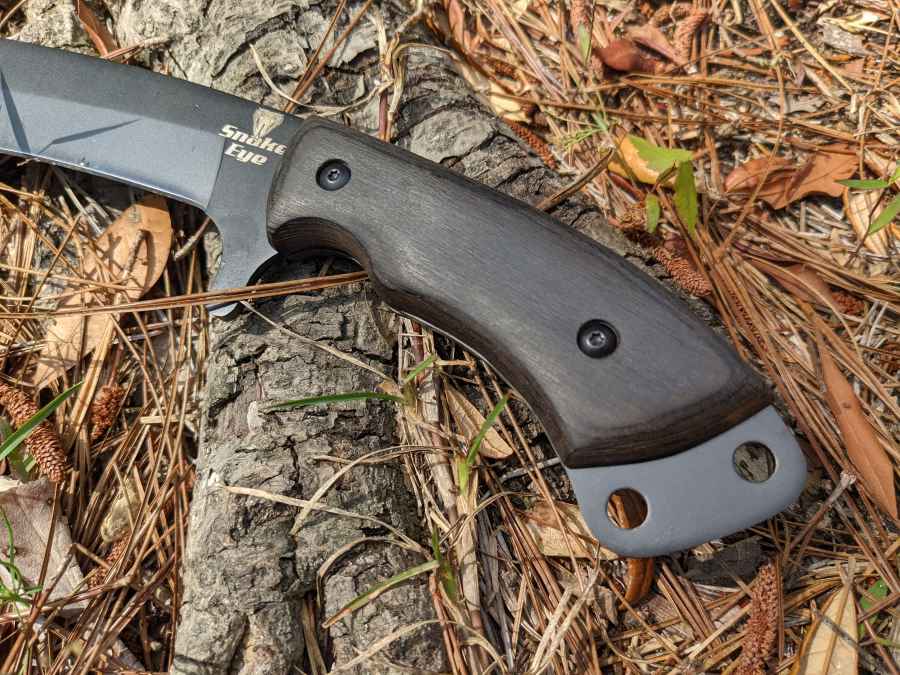
Handle & Comfort
This is where things start to really get dicey. Remember how I said upfront that this machete just doesn’t “feel” right in my hands? Part of that may be that the blade is poorly balanced, but it also has a lot to do with the handle, which is simply one of the least comfortable handles I’ve ever seen on a machete.
I don’t have particularly massive André the Giant-esque mitts, but the handle of the Snake Eye feels absolutely tiny in my hands. The finger choil is too big for one finger and too small for two, and the handle stops short of the end of the tang, leaving 3/4-inch of metal exposed, presumably for no other reason than that it was cheaper to do it that way.
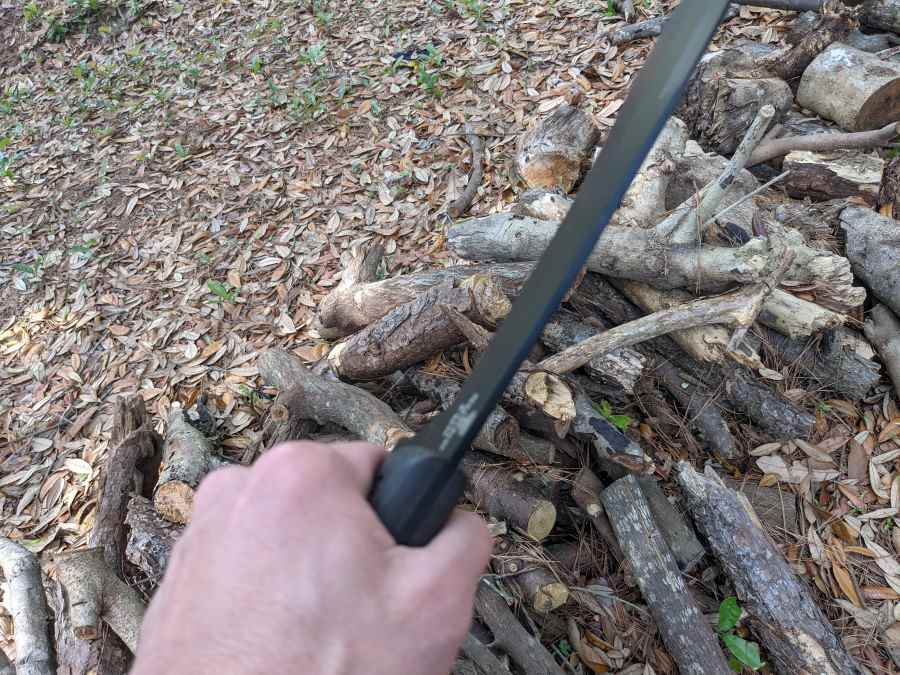
To make matters worse, whatever fake wood composite it’s made out of has zero grip, and at no point while using this machete did it feel safe and stable in my palm. Oh, and the shape of the handle doesn’t quite match the shape of the tang, so you can feel every seam constantly. AND the screws that hold the scales in place aren’t tight enough, so there’s a fair amount of play in the handle. Yikes.
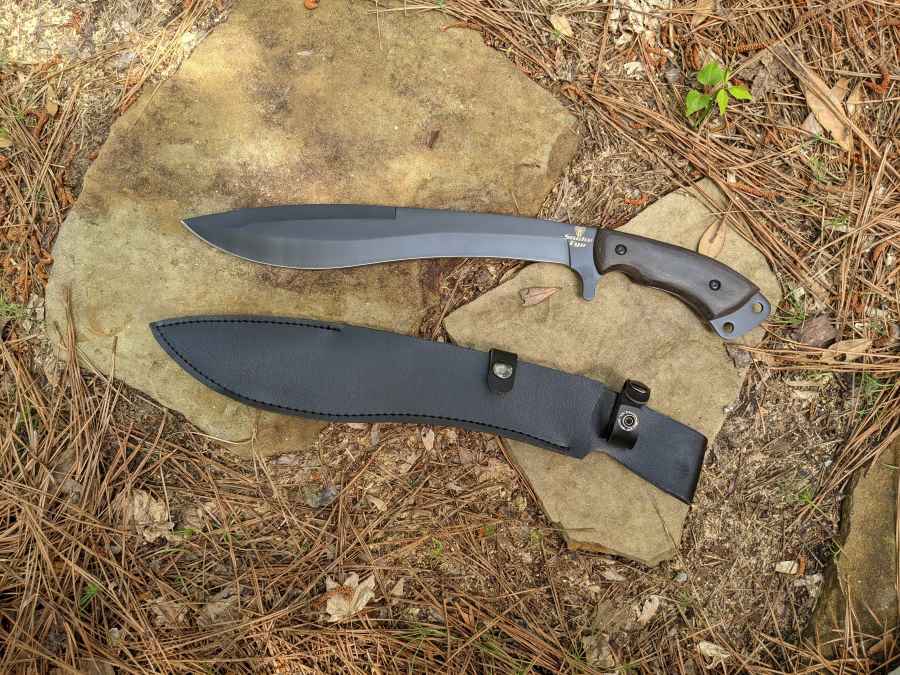
Sheath & Belt Carry
I’m accustomed to machetes coming with fairly mediocre sheaths, so I don’t have a especially high bar for what’s acceptable in a sheath. Even by that standard, this one is pretty bad. Again, it’s supposedly leather, but is clearly a fake-leather layer glued to a plastic layer. I’ve barely touched mine, and the glue is so weak that the layers are already peeling apart.
The machete rests loosely in the sheath, which has a couple of snaps to hold it more-or-less in place. There’s a non-reversible belt loop that perplexingly seems to be designed to be worn only on one’s left hip.
“IT’S GARBAGE!“
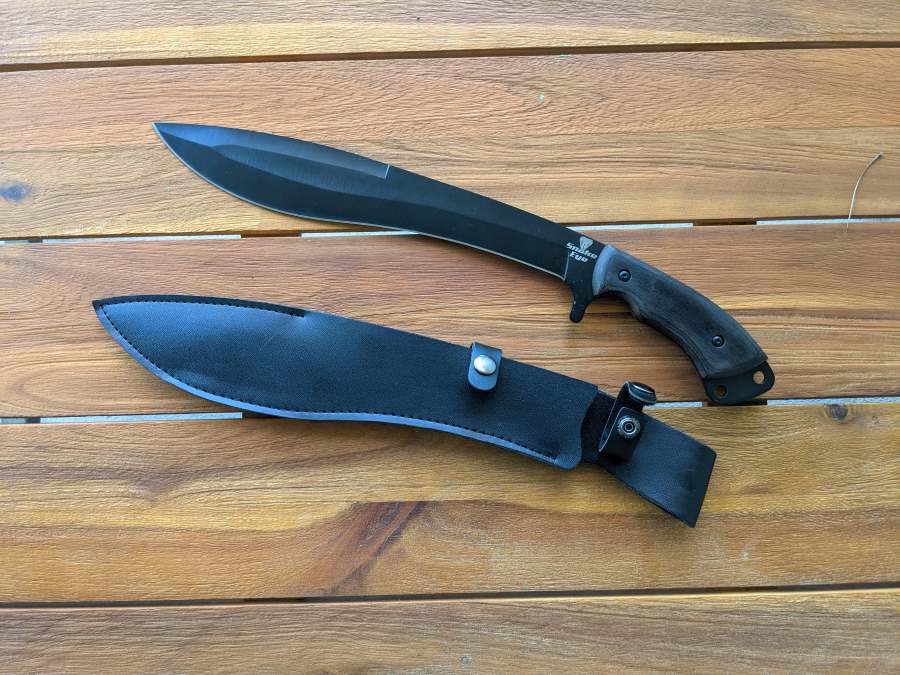
Final Thoughts on the Snake Eye Machete
What can I say?
I had high hopes for the Snake Eye Machete based on its initial appearance, but at the end of the day, it underperformed big time. The only salvageable part of this, for me, is the blade itself, which might perform better with a decent handle.
And sure, you could remove the scales and replace them with something better, but is a budget-friendly blade like this one really worth that kind of extra effort? The Snake Eye goes for around $35 on Amazon, and for that price you could pick up a far-superior Weyland Kukri. Or save up a few extra bucks and get a CRKT Kuk instead.
My point is, THERE ARE BETTER OPTIONS OUT THERE. I understand that you get what you pay for, and I don’t expect the world’s best machete at this price point. But I expected better than this.

Blair Witkowski is an avid watch nut, loves pocket knives and flashlights, and when he is not trying to be a good dad to his nine kids, you will find him running or posting pics on Instagram. Besides writing articles for Tech Writer EDC he is also the founder of Lowcountry Style & Living. In addition to writing, he is focused on improving his client’s websites for his other passion, Search Engine Optimization. His wife Jennifer and he live in coastal South Carolina.

